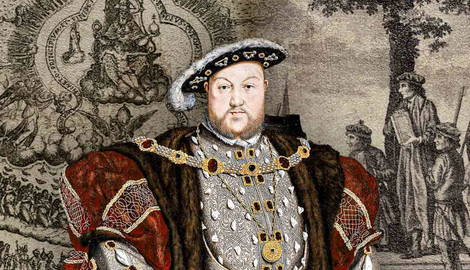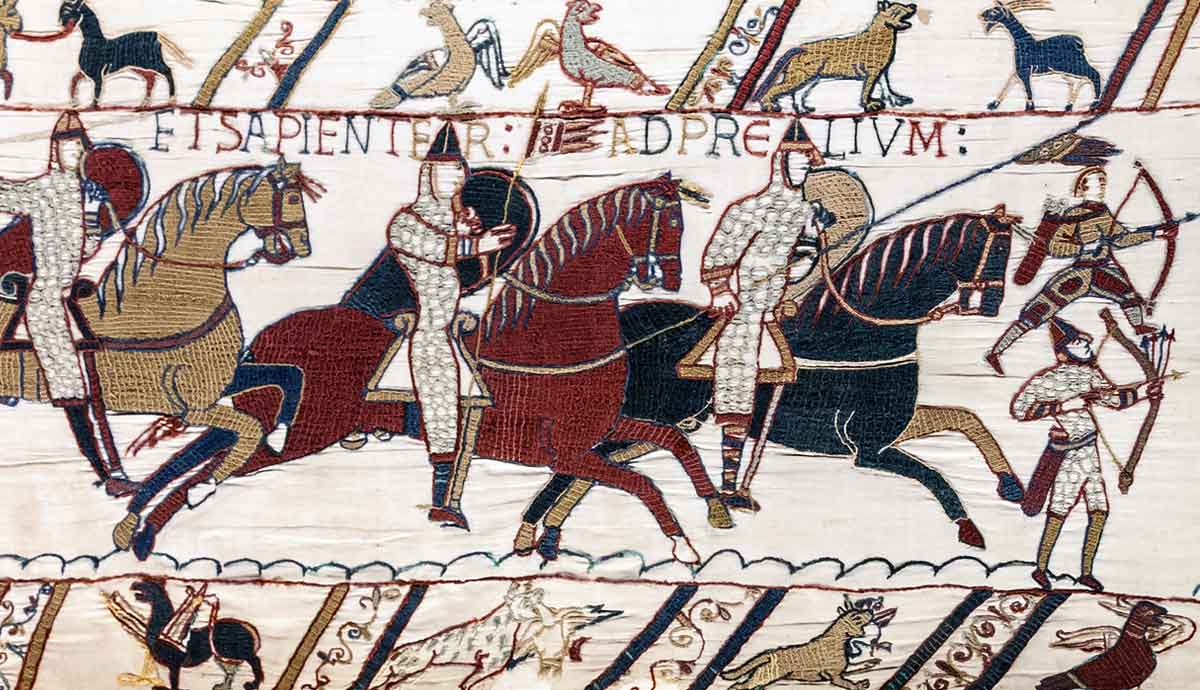
summary
- Changing Social Order: Tudor rebellions stemmed from shifts in the “Great Chain of Being” that increased royal power while displacing previous networks.
- Religious Upheaval: Severe swings in religious policy undermined the stability of daily life and fueled widespread discontent.
- Geographical Factors: Weak Crown authority and strong local identity fostered unrest, but this was often resolved by royal progresses.
- Taxation and Economic Anxieties: Led to the disenfranchisement of the “middling sort,” who were leaders of local communities and drove revolts.
Tudor England is a popular period in history, characterized by its colorful rulers, religious strife, foreign conflicts, and courtly intrigue. It was a tumultuous period in English history, with several large rebellions across the country, from the Pilgrimage of Grace to the revolt of the Earl of Essex. With so much change engulfing the nation, flashpoints would naturally be expected. But was there a common thread linking the Tudor rebellions?
The Chain of Being

The Crown featured at the heart of all the Tudor rebellions. It served simultaneously as an object of opposition and an object to which rebels professed their loyalty, while seeking to alter the structures and personnel around it. Tudor conceptions of society were based on an order laid out by God. The contemporary Thomas Smith placed the monarch at the top of the societal “pyramid,” which contemporaries referred to as the “Great Chain of Being,” neatly sorted into ranks, with each group having authority over, but also obligations to, those below. Children learned that authority was divinely ordained through learning “catechisms,” and this was reinforced in homilies, prayers, and sermons throughout their lives.
The Chain of Being and similar models taught that revolt against superior orders was against both natural law and earthly law. The Tudor period, however, unsettled received notions of authority. The dissolution of the monasteries and the growth of new industries produced new elites who, in some areas, began to displace the traditional nobility. In some cases, members of the church hierarchy were removed and replaced, sometimes multiple times within just a few years. Religious changes disrupted conceptions of authority and natural order, whilst also disrupting everyday life in ways we now take for granted. The entire calendar of saints’ days and local celebrations was shattered, ending customs that acted as agents of community cohesion.

Amidst all this, however, the Crown sought to protect and enhance its prestige. Numerous historians have detailed the initiatives by royal administrators to extend the reach of the crown during this period, with Thomas Cromwell and William Cecil being among the most famous. Although reality was often far from the theory, and power was still largely mediated through local agents, there is a recognizable pattern through the 16th century of the traditional rights and privileges of the nobility being slowly eroded in favor of royal favorites and appointees, so much so that it was one of the chief causes of the 1569 Northern revolt.
Religion

Religion is the obvious go-to for explaining revolts in the Tudor period. The period saw great swings in the religious settlement of the country. Although Henry VIII’s break with Rome in order to marry Anne Boleyn has popular notoriety and began the dissolution of ancient monasteries, it was a moderate reformation by European standards. His son, however, was surrounded by more fervent Protestants, such as Lord Somerset and Archbishop Cranmer, who made further sweeping changes. Then, the country was pulled back into the embrace of the papacy under his older sister, “Bloody” Mary I. Her premature death saw the accession of her sister and Anne Boleyn’s daughter, Elizabeth I, who struck what is commonly called a “via media” settlement between her brother and sister’s changes. Her regime demanded surface obedience but was equally anxious not to “make a window into men’s souls.”
The severe swings in such a compressed timespan naturally created confusion and ignited the opposing forces of zealotry and reaction. The Pilgrimage of Grace of 1536-7, as the name implies, had resistance to Thomas Cromwell’s reforms at the heart of its petition. The rebels from the northern counties rioted and occupied York before being suppressed. The Western rebellion in Devon and Cornwall in 1549 similarly rose in opposition to Edward VI’s government’s attempts to implement a new liturgy and prayer book. Wyatt’s Rebellion, the short-lived Protestant attempt to put Lady Jane Grey on the throne in place of Mary I, was also motivated by religious fear. Another Northern rebellion in 1569 again drew on the Catholic sympathies of the region but went further, seeking to replace Elizabeth with the Catholic Mary Queen of Scots.

Rebellion didn’t always rely solely on religion as a motivator. The East Anglian rebels in 1549 ostentatiously proclaimed their support for the religious changes of Edward VI as a way of demonstrating their ultimate loyalty to the royal authorities, to reassure them that their focus was on local grievances.
Geography of Discontent

Some parts of the country had traditions of rebellion and discontent with the central government. The West Country and the North had traditionally been the areas where the Crown’s authority was weakest and local landowners had more influence and power than normal. There were local customs and traditions that maintained a sense of local identity and encouraged local solidarity in rebellions. Land ownership tended to be more concentrated in fewer hands, such as the Duchy of Cornwall and the earls of Northumberland, respectively.
Cornwall, in this period, had its own language and distinct culture. The county was mainly governed and owned by the Duchy of Cornwall, a title traditionally held by the king’s oldest son. In practice, the lands were governed by royal managers and administrators who tended to be English-speakers, in contrast to the locals who still spoke Cornish. This created a top-heavy local society where the differentiation between the upper and lower orders was even more pronounced than elsewhere. The imposition of an English Prayer Book, even though it was replacing a Latin one, contributed to a feeling of linguistic and cultural erosion and the 1549 rebellion. An increase in sheep and textile taxes, two industries on which Cornwall was more dependent than others, was also a factor.

The North, although less culturally distinct than Cornwall, had long been a source of trouble for the Crown, whether it was the Northern resistance to King John or the rebellion of Harry Hotspur. The borderlands of Scotland had created a “marcher” society dominated by the earls of Northumberland, who were also the largest landowners. Society was more vertically integrated, with closer ties between lords and their retinues. It had also retained strong cultural signifiers. For example, the Pilgrimage of Grace used symbols and the banner of St Cuthbert of Durham, a historic Northern martyr who was also summoned for popular use in many medieval uprisings. In such a context, royal attempts to increase their influence through taxation and the abolition of local monasteries naturally triggered greater resistance than elsewhere, feeding into the Pilgrimage and the 1569 Northern Rising.
Taxation and Economic Anxiety

Taxation was a running cause for rebellion. The Tudor state was expanding in ambitions and power, but was still reliant on medieval forms of raising revenue, a problem that would not be truly solved until after the Glorious Revolution of 1688. Tudor monarchs’ financial limitations often led them into conflict with their subjects. Henry VIII’s need to fund expeditions against France and Scotland triggered resistance in 1513 and 1525. The Tudors also practiced indirect taxation through inflation, with both Henry VIII and Edward VI debasing the coinage to raise revenue for the crown, pushing up prices and contributing particularly to the 1549 western revolt.
More broadly, the 16th century was a period of economic changes, continuing trends that had begun with the consolidation of land ownership and the effective end of serfdom with the Black Death. The enclosure of common land and substitution of agrarian for livestock farming became more widespread and was one of the chief complaints of the Pilgrimage of Grace, the 1549 unrest, and the Oxfordshire rising of 1596. The increase in bad harvests throughout the 16th century, likely a result of the Little Ice Age, while the population was growing in size, intensified these insecurities.
Social Class

Who it was that rebelled had changed under the Tudors. Prior to Henry VIII, rebellion had mostly been a noble affair, the “Peasants’ Revolt” being the exception rather than the rule. The larger rebellions had been dynastic disputes over the succession. Henry VII and Henry VIII’s ruthless executions largely ended this issue, aside from small-scale aborted attempts such as that of the Earl of Essex at the end of Elizabeth I’s reign. For much of the 16th century, though, the nobility largely stayed away from outright rebellion. There was, of course, noble involvement in rebellions, but their roles were very different from what they had been in, for example, the Wars of the Roses.
Most of the Tudor rebellions instead came from further down the social scale. They tended to be instigated and led by the rising “yeomen” or the “middling sort” men, who were prosperous farmers but who might also have run businesses. This was a group that had been slowly emerging through the Middle Ages and became more prominent after the Black Death and the Peasants’ Revolt. They were the common leaders of villages, taking up positions as churchwardens, bailiffs, constables, or jurors. They were generally well-informed, had knowledge of the law, and access to the courts. They tended to be the class that supplied most of the country’s clergy, including bishops. Conscious not to appear as a rabble, they ostentatiously professed their loyalty to the king and their natural leaders, even setting up mock governments in their occupied areas to display their orderliness, as in Kett’s Rebellion. Captured gentry and lesser nobles were even pressed into leadership positions.

This class came more to the fore as leaders of rebellions because the type of politics was different. Their grievances were typically religion, tax, and what they perceived as abuses by those further up the social scale. Crucially, unlike their social betters, they had no voice in national and regional government. Rebellion was the only way they could make clear their opinions and frustrations with the big issues.
Superficially, the rebellions dominated by the nobility appear different. Those that erupted in Elizabeth I’s reign were certainly more explicitly about regime change. The 1569 Northern Rebellion aimed for a replacement of the monarch, while the Earl of Essex’s revolt targeted the court around her. These revolts were all led by nobles who felt excluded from the center of royal power. The Northern nobles sat outside of royal favor due to their stubborn Catholicism, while resentful of increased royal interference in their traditional spheres of influence. The Earl of Essex and his collaborators, on the other hand, were simply resentful of the influence of other royal advisors, namely Sir Robert Cecil.
Cries for Attention

Essentially, rebellions are requests for attention, to create points of contact with the monarchy where there was none. As the Tudor government grew and disrupted established local ties and means of redress, it often failed to replace them, creating groups who felt disenfranchised. The yeomanry that led many of the commoner rebellions of the Tudors lacked the ability to represent themselves and their interests in the monarch’s parliaments. Rebellion was their recourse. It was the groups that felt that they should have a voice, but did not, that felt the most compunction to revolt, be it prosperous commoners, the rural poor, or estranged nobility.

This is reflected in the way that royal progresses seemed to stave off rebellion. Elizabeth I was the Tudor monarch who happened to progress the most around the country. Elizabeth understood the need to be seen, for the pageantry and ceremony of the Court to be witnessed, for her royal power to be demonstrated, and for her image to be reflected in art, poetry, and literature. After the Northern rebellion, she and the Court made a point of visiting the region often.
By contrast, Henry VIII was one of the least travelled English kings, sticking for the most part to areas around London. His reign saw, relatively speaking, much more unrest than that of his daughter. By the same token, however, the West Country, which did rebel under Edward VI, likely did not under Henry VIII because of his tour there in 1535. His visit to the north in 1541 brought apologies in words and cash from the people of Lincolnshire and Yorkshire for their rebellion five years previous. Edward VI was, of course, incapable because of his youth of progressing for much of his reign, and soon saw two large, coordinated rebellions, as well as other more sporadic risings.

This is not to say that a lack of progresses triggered rebellion, but progresses seemed to help prevent it. If a local population is ignorant of their ruler, they are more likely to rebel against them. This may explain why, despite the famine, inflation, and wars of Elizabeth’s reign, her rule rarely looked threatened. People, it seems, no matter what their social rank or religion, rebelled because they did not have sufficient contact with the government to express their grievances.
The key human makeup of the rebellions of Tudor England was those who felt revolt was the only way they could make clear their frustrations with the authorities’ handling of fiscal and religious problems. These were all problems that would continue through the 17th century and would perhaps not be fully resolved until the Glorious Revolution of 1688.
Select Bibliography
Fletcher, A., MacCulloch, D. (2004) Tudor Rebellions, Harlow.
Gajda, A. (2012) The Earl of Essex and Late Elizabethan Political Culture, Oxford.
Kesselring, K.J. (2007) The Northern Rebellion of 1569: Faith, Politics and Protest in Elizabethan England, Basingstoke.
Shagan, E.H. (2003) Popular Politics and the English Reformation, Cambridge.
Williams, P. (1979) The Tudor Regime, Oxford.
Wood, A. (2007) The 1549 Rebellions and the Making of England, Cambridge.










